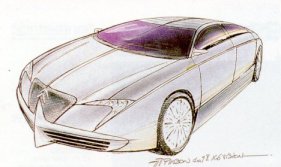
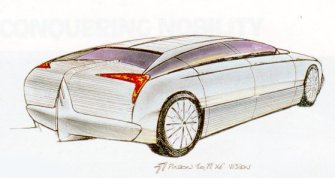
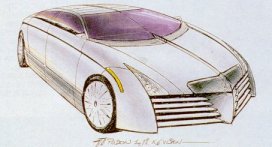
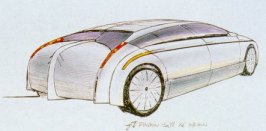
CitroŽn C6 Lignage |
 |
 |
The exploratory phase was short but pullulatlhg with ideas, some of which developed into ten 1:5 scale models. At centre page, the two renderings by Marc Pinson that present the definitive version. Above and below: a few alternative proposals. |
 |
 |
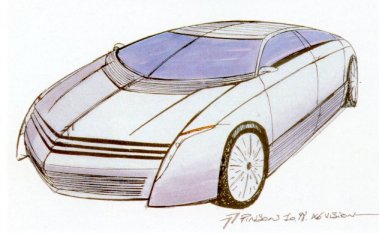 |
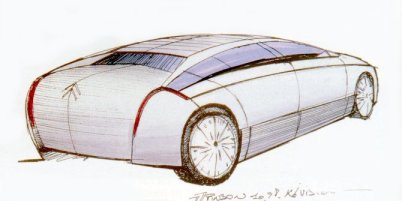 |
| Pirojkov brought up the
idea of putting a bonsai tree inside the car I said: okay, do it, I will sell it to the
management. And just think: when Satinet and Folz saw the car they said: that's okay! In
that respect, the management style in CitroŽn has changed". The front end of the C6 might look a bit evolutionary compared with existing CitroŽns, with a sleek, flat nose and horizontal air intake bars. Blakeslee more or less agrees. "It is simple indeed, but what I wanted to do was to change the logo, not the shape. The 'double chevrons' have been our cars ever since Andre CitroŽn used them first, but they have become smaller and smaller, and pointed, losing the original mes-sage, that of two fishbone gear wheel teeth. Now we have made the logo larger, with a stronger profile on the outer points. I wanted the management to rethink the logo". Pinson and Pirojkov are on hand to explain the finer points of their design efforts, which were managed under project leader Mark Lloyd. Pinson talks of CitroŽns as flying |
objects by virtue of the brand's aerodynamic origins, like the DS of SM, as well as the impression of driving on blades, like a catamaran, "because that relates to our traditional comfort." Then we wanted good visibility with the help of a panoramic windshield and a cer-tain dynamic expression with a long bonnet but short rear over-hang, all on a relatively long wheelbase. But we needed a large boot, because that is inher-ent in a large saloon, yet a CitroŽn should be two-box in its design expression. So we shaped the car as a two-box model, but with a functional classical boot lid which we achieved by virtue of a more vertical rear crushed into the volume. Also the A-pillar traditionally stands out as such with a CitroŽn, the pillar crushing into, and breaking with the volume. But the effects of running on blades I tried by integrating the body sides and the C-pillar into one volume, connecting these functions in a special way And for the tail lights, they look like boomerangs, but indicate a single chevron each". | The project was led by Marc Lloyd a designer at the Centre de Creation. The option they went for (above) deploys extensive glazing that stretches all the way along the sides as far as the rear lighting clusters. There the rear pillars blend into the sides to form "fins" that frame the rear window. | 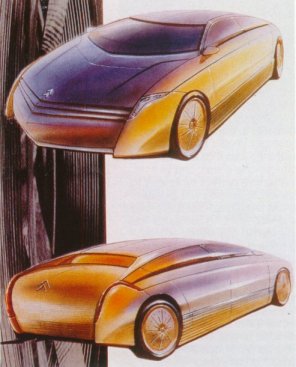 |
| To page 2 | 3 |
To page 4 |